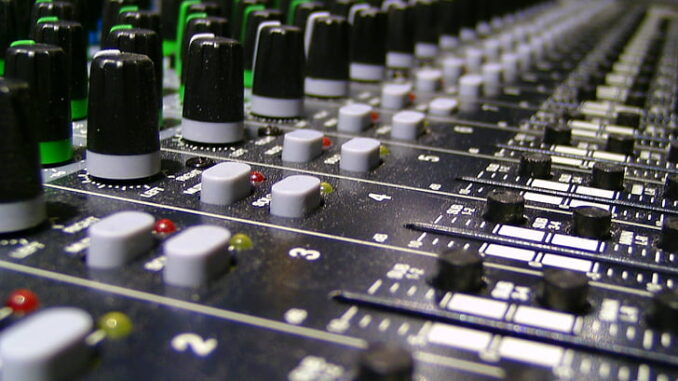

Mixing hip hop songs involves creating a final mix of all the individual tracks, such as drums, bass, synths, vocals, and other instruments, that make up the song. The goal is to create a balanced mix that highlights each track and enhances the overall sound of the song. Here is a step-by-step guide on how to mix hip hop songs:
- Start with a Clean Project: Before you start mixing, make sure you have a clean project with all the necessary tracks properly labeled and organized. This will make it easier to navigate through your session and find specific tracks when you need to. Before diving into the mixing process, ensure that your session is neat and tidy. This includes properly labeling and grouping all the tracks and having them in a logical order. This will save you time and help you navigate your session more easily.
- Set Your Levels: The first step in mixing is to set the levels of each track. Start with the drums and work your way through each track, making sure they are not too loud or too quiet in relation to each other. Start with the drums and set the levels for each element, such as the kick drum, snare drum, and hi-hat. Then, move on to the other tracks and set their levels in relation to the drums.
- EQ: Once you have your levels set, the next step is to use equalization (EQ) to shape the sound of each track. Start with the drums and adjust the low frequencies to make sure they have enough impact and punch. Move on to the bass and make sure it sits well with the drums. Then, adjust the EQ for the synths and other instruments to make sure they complement the other tracks. Begin with the drums and adjust the lows, mids, and highs to make sure they sound balanced and powerful. Then, move on to the other tracks, shaping the frequency balance as needed.
- Compression: Compression is an important tool for shaping the sound of your mix. It helps even out the levels of each track, making sure the quiet parts are more audible and the loud parts are tamed. Start with the drums and use a compressor to even out the levels. Then, move on to the other tracks, using a compressor where necessary. Start with the drums and use a compressor to control the dynamic range. Then, move on to the other tracks and apply compression where necessary.
- Reverb: Reverb is a crucial part of creating a sense of space in your mix. Start by adding a touch of reverb to the drums to create a natural-sounding room. Then, add reverb to the vocals and other instruments as needed to create a cohesive mix. Then, add reverb to the vocals and other instruments to help glue the mix together and give it a cohesive sound.
- Panning: Panning is used to create a sense of space in your mix. Start by panning the drums to the center, then pan the bass to one side and the synths to the other. Experiment with panning to create a sense of space in your mix. Start by panning the drums to the center, then pan the bass and synths to the left and right, respectively. Experiment with different panning positions to create a spacious and engaging mix.
- Automation: Automation allows you to make changes to specific parts of your mix over time. For example, you can use automation to turn down the bass during a chorus to make room for the vocals. For example, you can use automation to lower the volume of the bass during a chorus to make room for the vocals. Automation can help to bring life and movement to your mix.
- Finalize Your Mix: Once you have completed the mixing process, it’s time to finalize your mix. This means making any final adjustments to the levels, EQ, compression, reverb, and other effects. Then, bounce the mix down to a stereo file and listen to it on a variety of systems to make sure it sounds good in different environments. This includes tweaking the levels, EQ, compression, reverb, and other effects. Then, bounce the mix down to a stereo file and listen to it on various systems to make sure it sounds good in different environments.
- Mastering: Finally, you can master your mix to give it a professional, polished sound. Mastering involves using equalization, compression, limiting, and other tools to balance the levels and enhance the overall sound of your mix. This includes using equalization, compression, limiting, and other tools to balance the levels and give the mix a professional, polished sound. It’s important to remember that mastering is a separate process from mixing, and it’s best to use a professional mastering engineer to ensure the best results.
Remember, mixing is an iterative process and you may need to go back and make adjustments as you work. It’s also important to keep in mind that every mix is different and may require a different approach. Be patient and take your time, and you will end up with a great-sounding mix. we hope you enjoyed these 9 Expert Tips for Mixing Hip Hop Songs to Perfection.

